“When I first started working here, I didn’t realize this could be such a beautiful view,” says Scenic Hudson Parks and Trails Manager Carley Kiernan. She’s referring to a place along the Red Trail at our Madam Brett Park in Beacon. Benches there invite walkers to stop and admire the broad expanse of Fishkill Marsh. Indeed, it’s a stunning sight, all shimmering water and swaying grasses.
What made it impossible for Carley to appreciate this vista — and what keeps our park maintenance workers on their toes to preserve it? Japanese knotweed, one of the Hudson Valley’s peskiest invasive (non-native) plants.
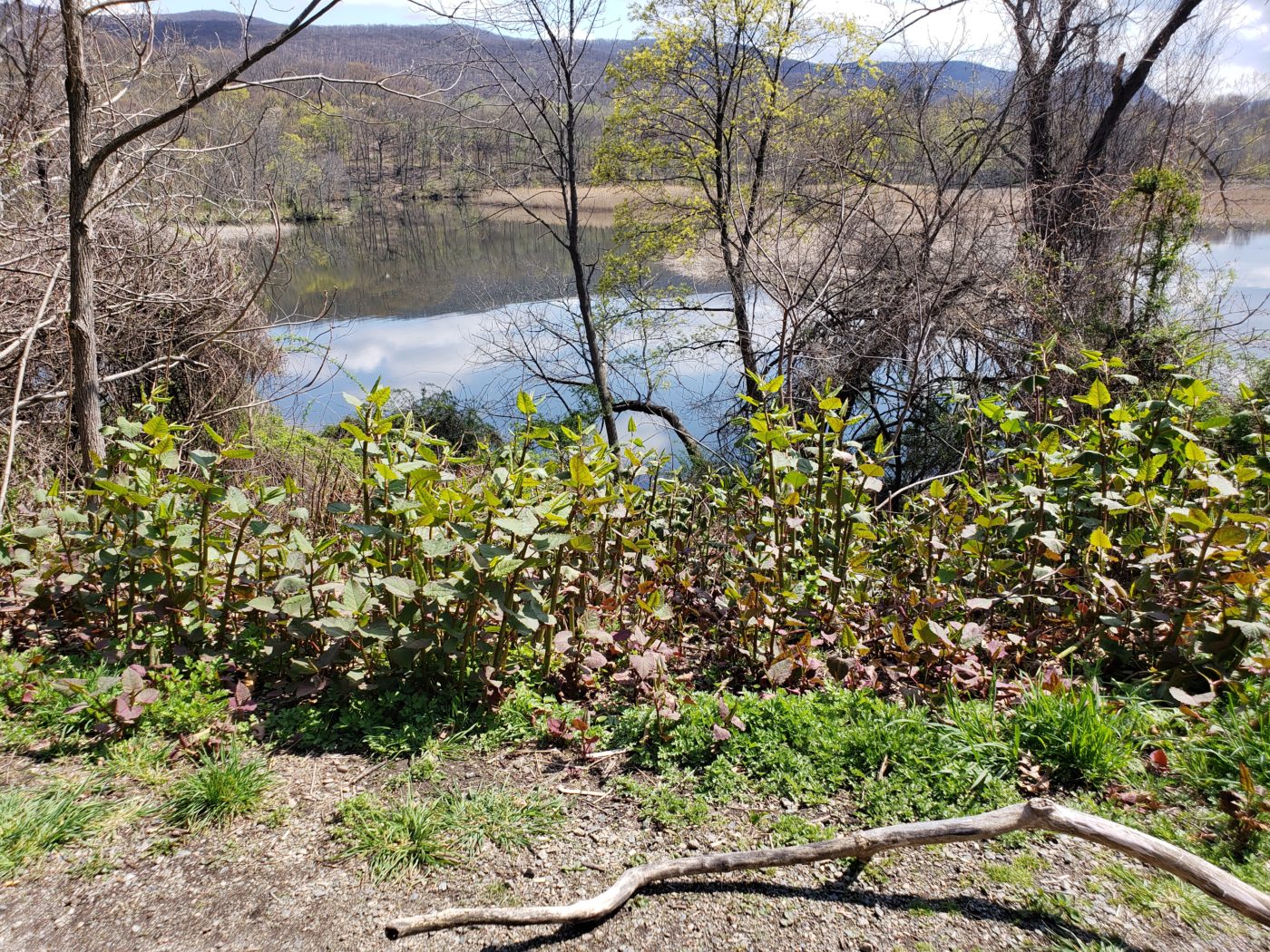
A member of the buckwheat family and native (as its name implies) to Asia, Reynoutria japonica arrived in the U.S. in the late 1800s, imported to adorn gardens. In pretty short order, the plant signaled it had no intention of remaining within well-tended beds. By the 1930s, it was deemed a pest.
In its rapid march across the landscape, it crowds out native species, disrupts wildlife habitat and, as in the case of Madam Brett Park, obscures beautiful views.
In 2014, Japanese knotweed and its equally harmful invasive cousins giant knotweed (Reynoutria sachalinensis) and Bohemian knotweed (Fallopia ×bohemica) received the dubious distinction of being added to New York’s list of Prohibited and Regulated Plants, meaning it’s illegal to “knowingly possess them with the intent to sell, import, purchase, transport, introduce or propagate.”
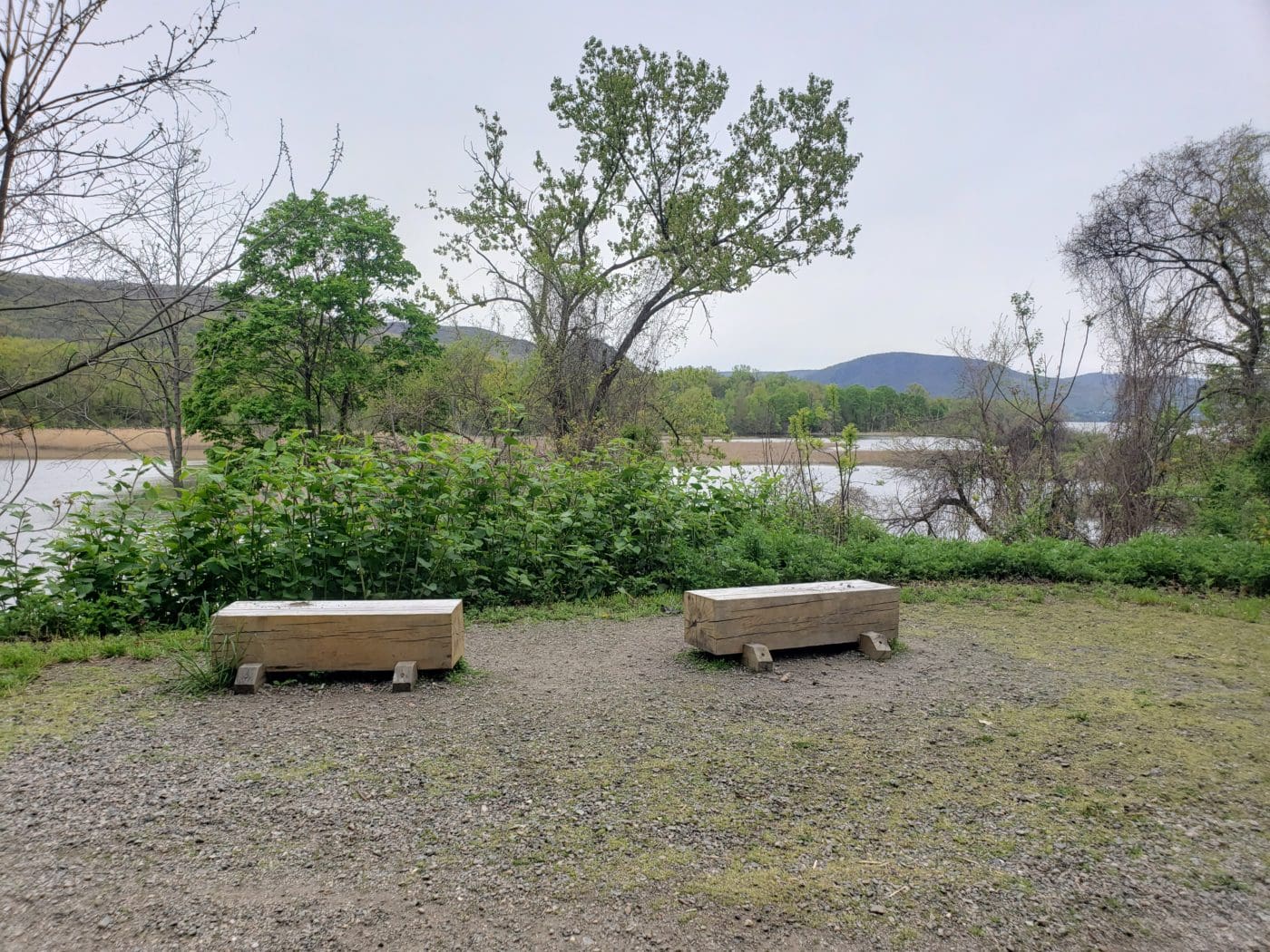
In addition to spreading far and fast and thriving in just about any kind of soil and climate conditions, Japanese knotweed defies eradication. Its bamboo-like shoots grow up to 15 feet tall. Researchers estimate the root system of a single plant can span up to 32,000 square feet—more than half a football field. Short of covering an area overrun with Japanese knotweed with unsightly black plastic and leaving it until the roots die—which can take up to 5 years—the only other, albeit temporary, remedy is to cut the plants back. At Madam Brett Park, Carley and her crew have to trim the marsh-side patch of Japanese knotweed “a couple of times a month” during growing season.
Could there be an easier, more effective and less labor-intensive solution? Maybe.
Mesh to the Rescue
Earlier this year, Scenic Hudson Land Stewardship Coordinator Dan Smith read an article shared by the Lower Hudson Partnership for Invasive Species Management — or PRISM — a collective of environmental groups (including Scenic Hudson) working to limit the toll invasive species are having on the region’s biodiversity and ecosystems. Written by a state biologist in Vermont, the article recounted her adoption of a new, experimental technique for combatting Japanese knotweed. “I thought it was a really interesting idea, and I wanted to try it,” says Dan.
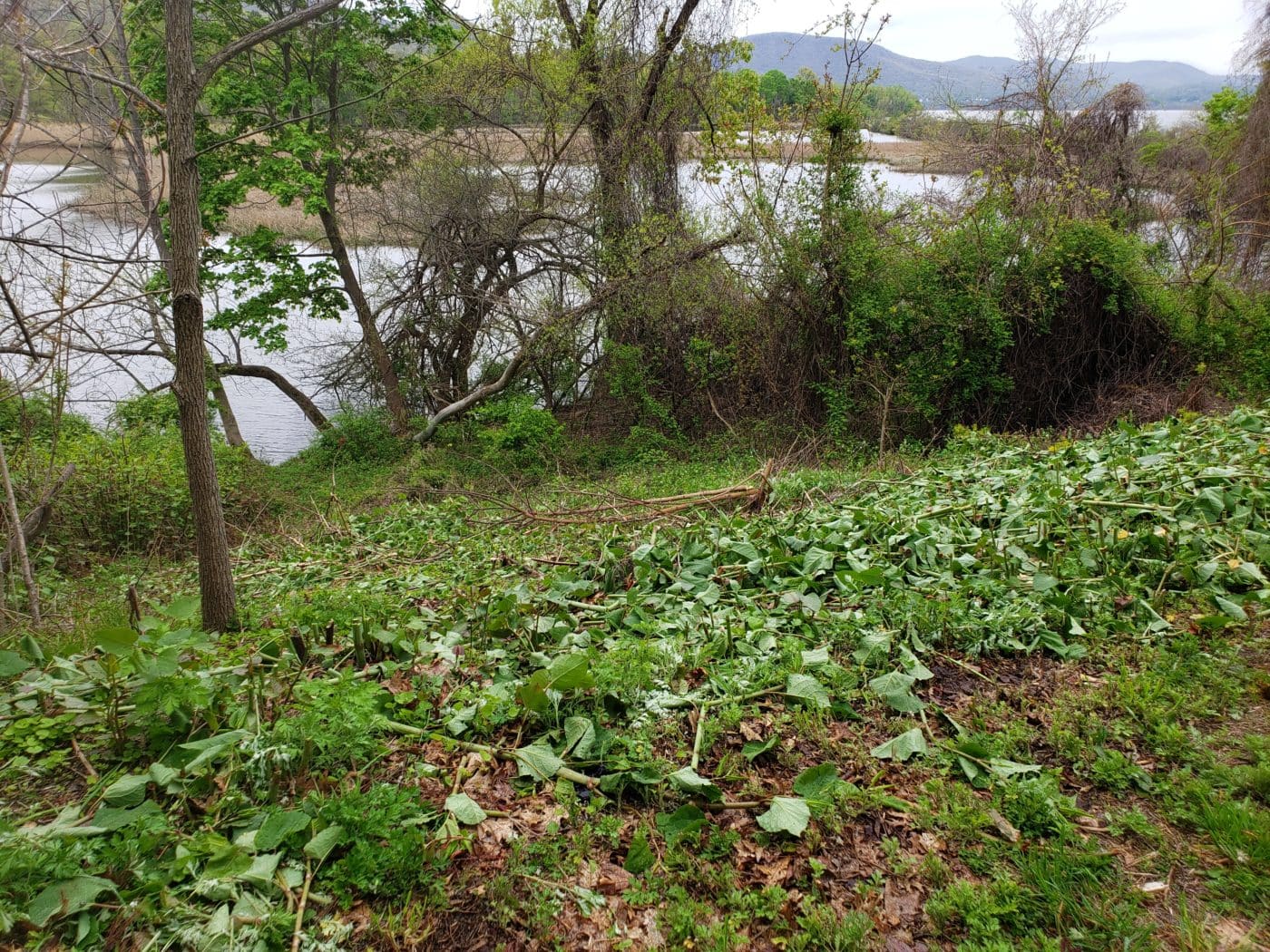
Developed in England, where Japanese knotweed cracks roads and building foundations, the simple procedure involves cutting a patch of the plant to the ground and covering it with a metal wire mesh. The hope is that stems of new plants growing through the mesh will be girdled, or strangled, causing them to die. The plant will try to put up new stems, with similar results, until it uses up the store of energy in its roots. At that point, if the process works, no further growth should occur. End of Japanese knotweed.
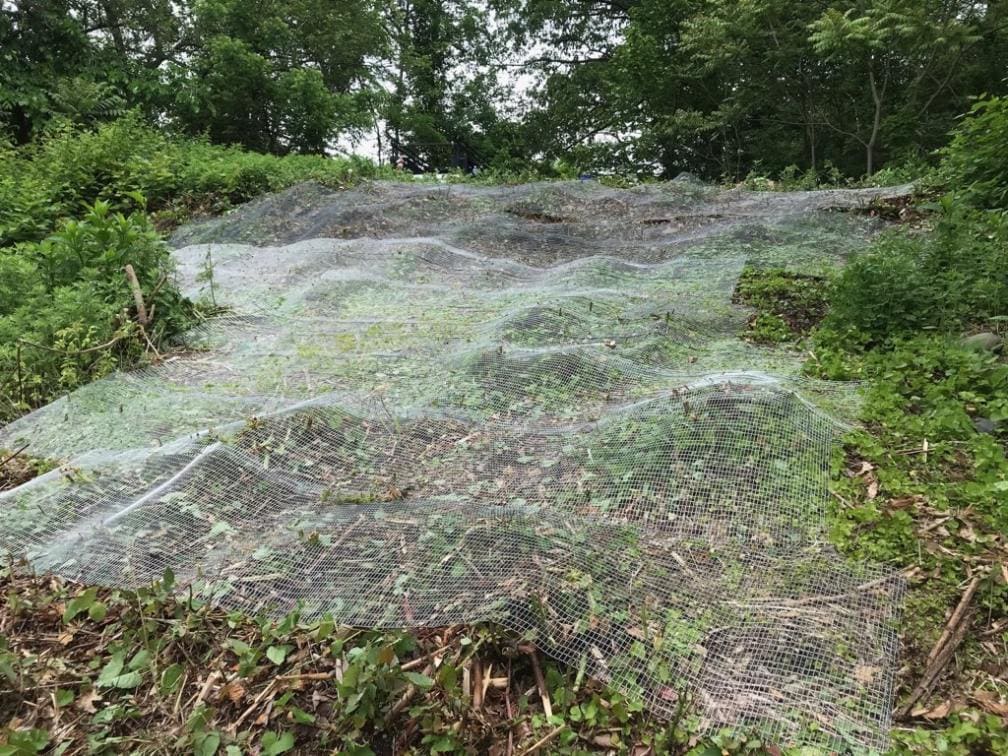
Dan secured Carley’s eager cooperation to test the technique. (“I’m always trying to find ways where I can work together with Dan and the natural resources team,” she says.) In June, he staked down mesh over a 400-square-foot plot of Japanese knotweed at our Esopus Meadows Preserve, while Student Conservation Association interns Carly Shenold and Holly Clark did the same over a slightly smaller plot at Madam Brett Park. It’s far too early to tell how the project will pan out — it could take years to see results. “It’s definitely trial and error. We don’t know what will happen,” Carley admits.
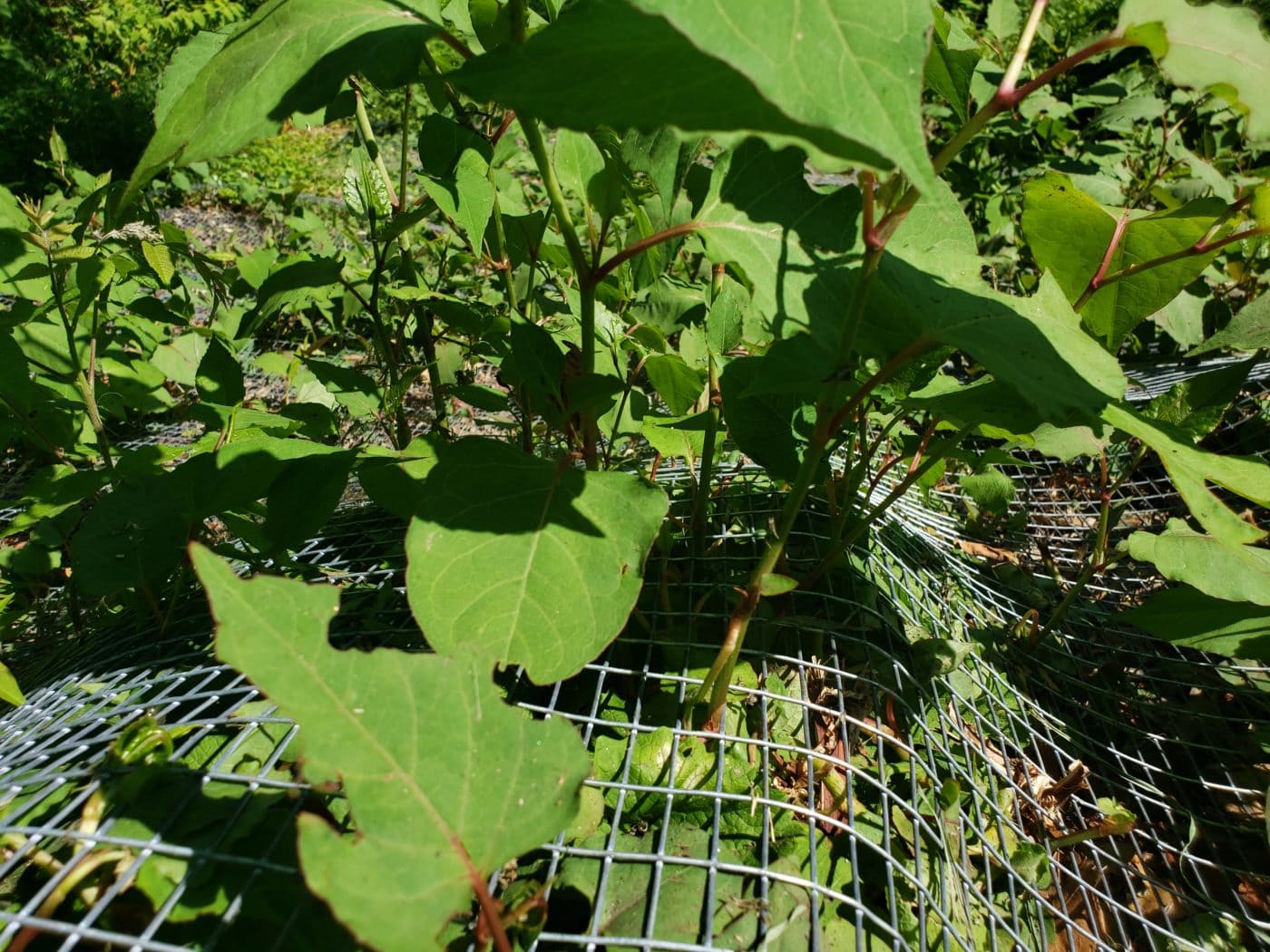
If it does prove successful, the procedure will provide numerous benefits. “Instead of rigorous maintenance, if we go to the source of the problem and remove the invasive, it will be good for the ecology of the land and good for us, as we don’t have to keep trimming it back,” says Carley. The mesh doesn’t completely cover the soil, as plastic does, so Dan hopes the seeds of native plants can be sown and start to establish while the Japanese knotweed perishes. He plans to test this out in the fall.
One thing for sure, the mesh is less obtrusive. “Visually, it’s going to be much nicer than seeing 400 feet of black tarp,” Dan says.
Stay tuned: We’ll provide updates as the experiment unfolds.